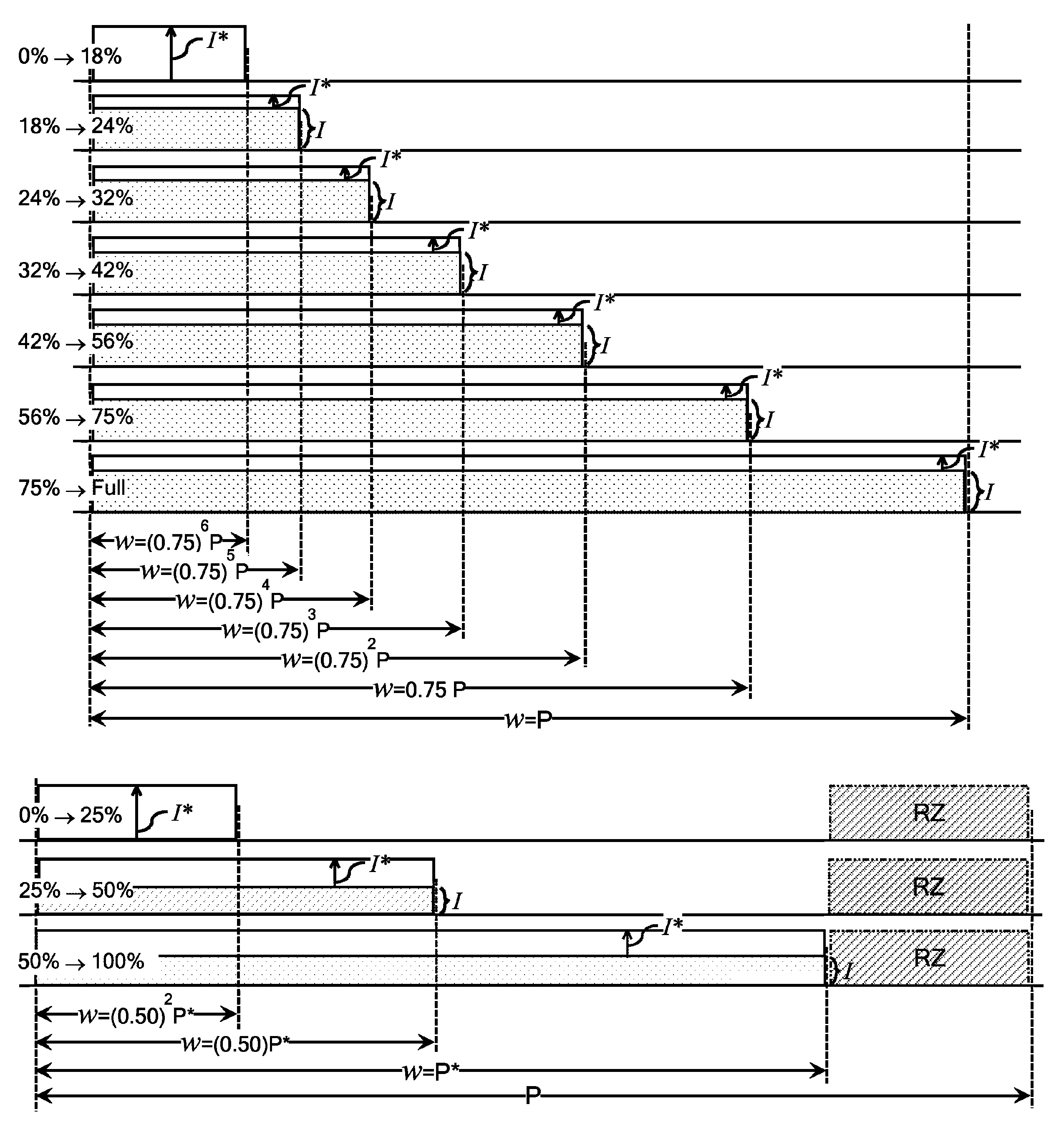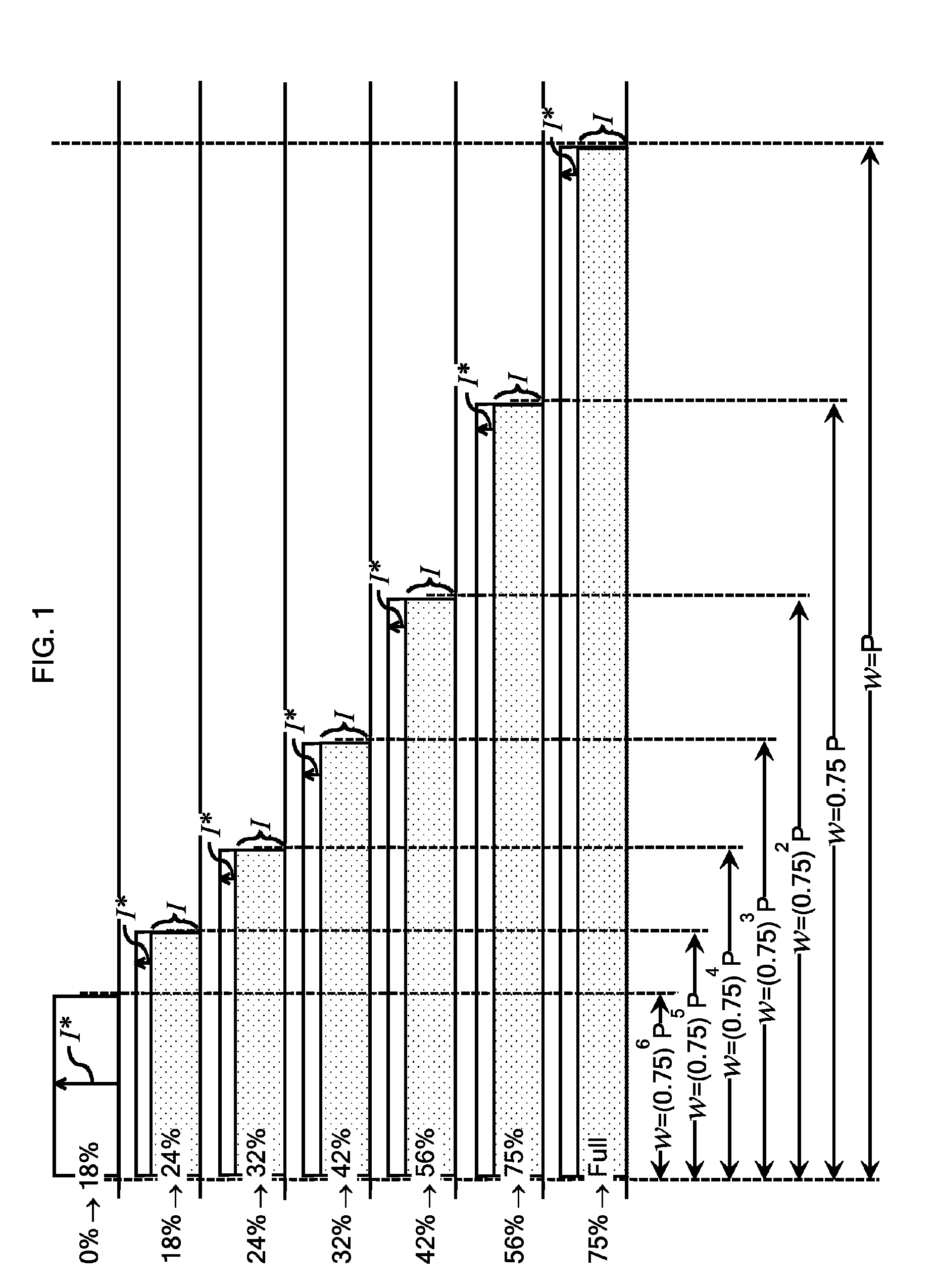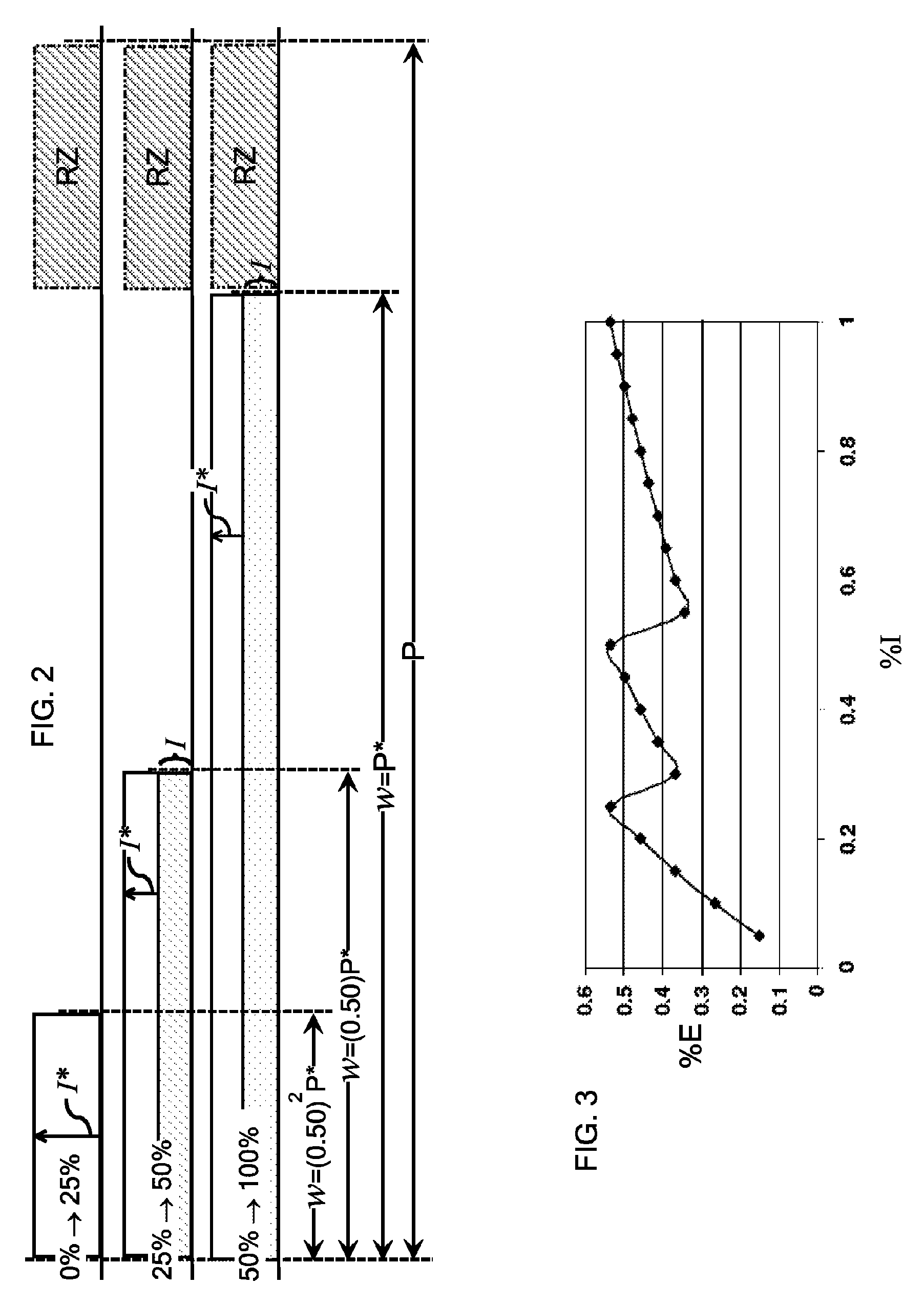Pulse mode modulation in frequency converted laser sources
a laser source and pulse mode technology, applied in semiconductor lasers, optics, instruments, etc., can solve the problems of significant electronic limitations of generating such high-speed modulation signals, high-speed analog circuits that often require costly components and design and manufacturing techniques, so as to improve conversion efficiency, optimize electrical power efficiency, and achieve high modulation
- Summary
- Abstract
- Description
- Claims
- Application Information
AI Technical Summary
Benefits of technology
Problems solved by technology
Method used
Image
Examples
Embodiment Construction
One of the contemplated operational methods of the present disclosure can be illustrated with reference to the diagram of FIG. 1 and the frequency converted laser source 100 of FIG. 6, which typically comprises a laser diode 10 that is optically coupled to a wavelength conversion device 20 for conversion of a pulsed optical signal generated by the laser diode 10. They laser source may also comprise a variety of additional components including, for example, coupling optics 30, collimating optics 40, and an optical filter 50.
According to the illustrated method, the laser diode 10 is driven in a pulsed mode to define pixel intensity values that correspond to desired gray scale values of image pixels in the image plane of the laser source 100. The pixel intensity values are a function of a laser control signal that comprises a discontinuous pulse component of pulse width w, a relatively constant intensity component I, and a continuously variable intensity component I*; each of which are...
PUM
 Login to View More
Login to View More Abstract
Description
Claims
Application Information
 Login to View More
Login to View More - R&D
- Intellectual Property
- Life Sciences
- Materials
- Tech Scout
- Unparalleled Data Quality
- Higher Quality Content
- 60% Fewer Hallucinations
Browse by: Latest US Patents, China's latest patents, Technical Efficacy Thesaurus, Application Domain, Technology Topic, Popular Technical Reports.
© 2025 PatSnap. All rights reserved.Legal|Privacy policy|Modern Slavery Act Transparency Statement|Sitemap|About US| Contact US: help@patsnap.com



